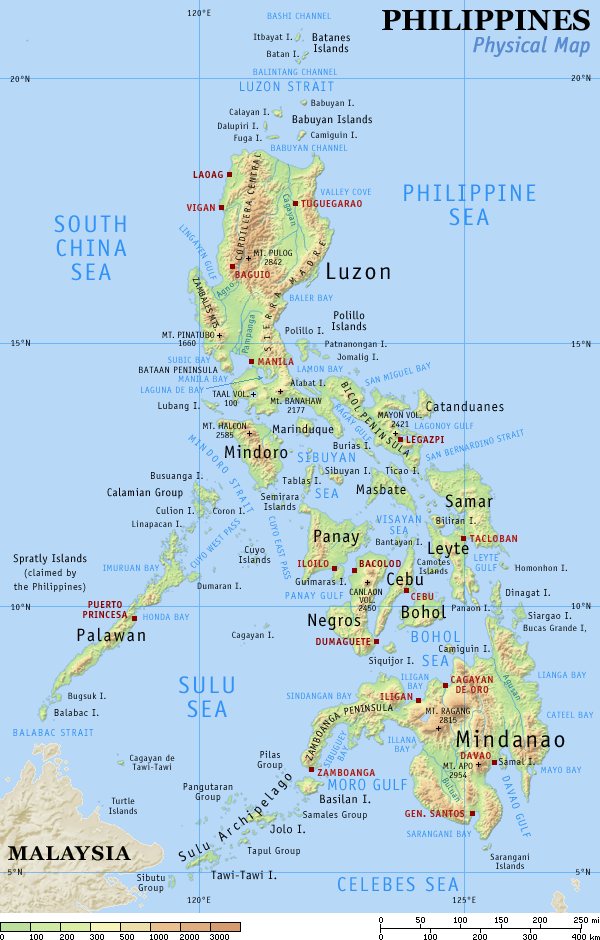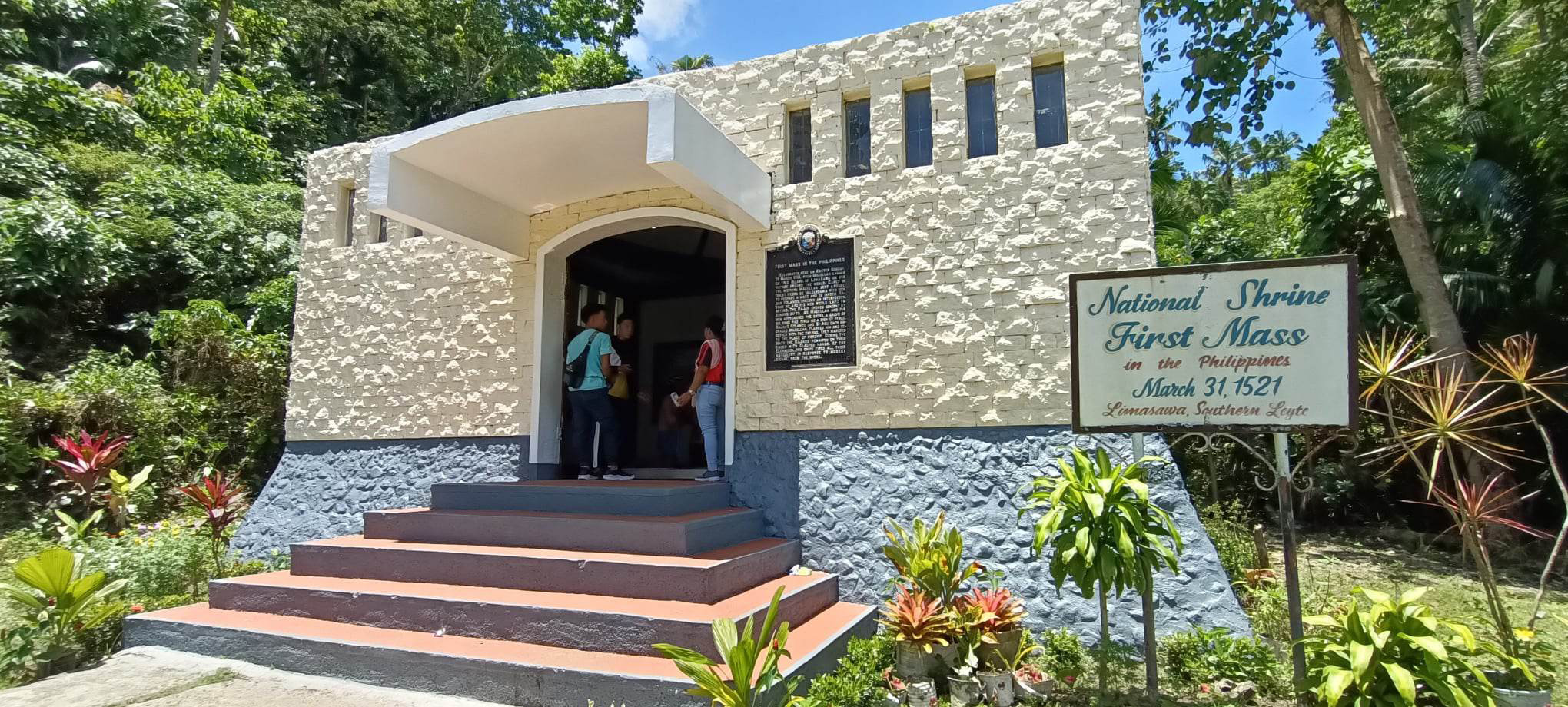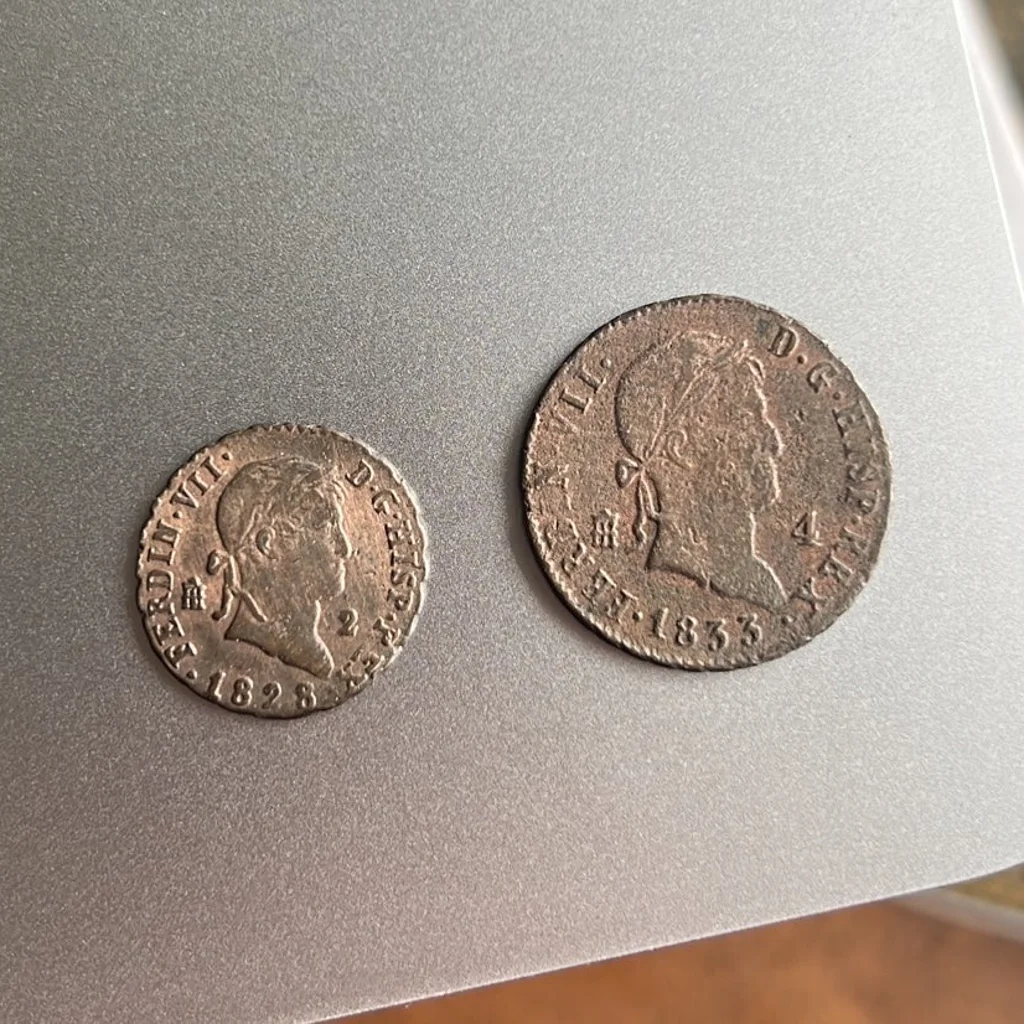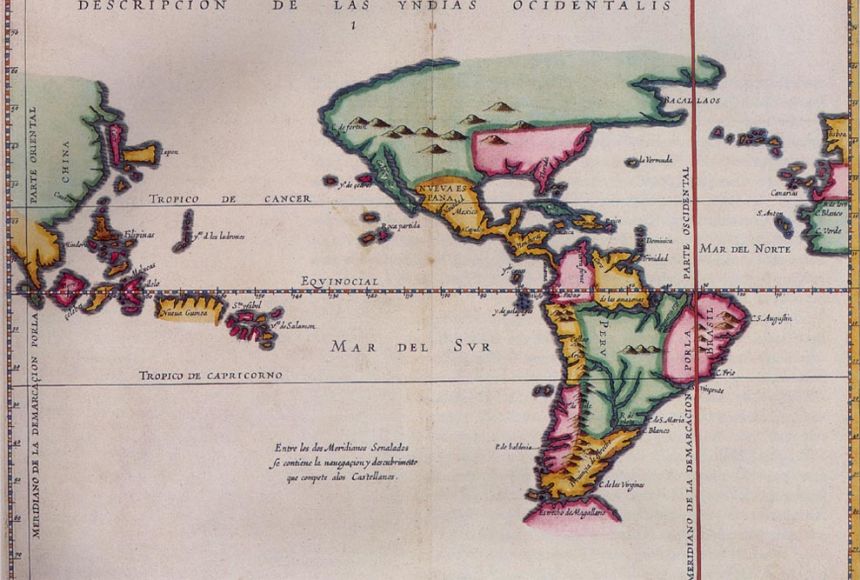FERDINAND MAGELLAN'S ISLAND HOPPING
Ferdinand Magellan's Island Hopping
- - - - - - - - - - - - - - - - - - - - - - - - - - - - -
Introduction
"Inter Caetera" refers to the Papal Bull or official letter or document issued by the Pope where the official seal of the Pope called "bulla" is affixed in the document. "Kung baga, may selyo sang iya oficina." Ok, clarex na tayo dyan, lol.
* * * * * * * *
On order of the Spanish King, Charles I, Ferdinand Magellan promised the young King (18 years old) to bring immeasurable wealth to the kingdom. Specifically, Magellan was ordered to search farther for the Spice Islands. He must have been excited to prove his mettle, as an explorer, to the Monarch.
* * * * * * * *
Ferdinand Magellan Monument
Mactan Island, Province of Cebu, Philippines.
Photo by TP Henry Libo-on.
* * * * * * * **
Magellan's early life experiences as a Sailor
Earlier in 1510, Magellan assisted in the conquest of Goa, West coast of India and the hub of Spice Trade.
In 1511, Magellan assisted the Portuguese in Malacca, Malaysia where he captured the Malay slave Enrique.
The latter became his interpreter and brought Enrique on his return to Portugal where he began to plan his return to Malacca. There, the idea of serving the Kingdom of Spain was boiled. In short, the Portuguese will now serve the Spanish King to continue the search for more wealth and colonies for the kingdom.
Magellans' island hopping from Malacca to Luzon and Cebu (c. 1510-1511)
Meanwhile, being stationed in Malacca gave Magellan the opportunity to go on island hopping. Just like today's Bloggers. He sailed to Luzon and Cebu and back to Malacca. In short, he was not a stranger in the Luzon and Cebu area. This was circa 1510-1511.
Then, he decided to go back to Portugal and in 1511 that trip was done. I'll just insert this idea for the Filipino readers - Magellan, therefore, did not discover the Philippines as the liars and fake historians of the past claimed.
* * * * * * * * * *
Magellan knew during those visits that a powerful kingdom and rulers were already existing in this part of the world.
These areas were then known as the Kampampangan area, Tondo, Maynilad, Cebu, and other kingdoms in the Visayuas. Rajah Solaiman, Rajah Lakandula, and the Kings of the Kapampangan, Rajah Humabon of Cebu, Chieftain Lapu-Lapu of Mactan, Rajah Kolambu of Limasawa Island, were already rulers of powerful Luzones and Visayas kingdoms and settlements.
A very rich kingdoms and settlements that had rich culture and traditions and most of all - Government. (Shoutout sa mga naga libud fake news dyan, lol. joke lang.)
* * * * * * * * *
Now, after seven or eight years stay in Portugal, Magellan decided, as mentioned earlier, to serve the King of Spain and continue his discovery of the world in search for more wealth like islands that produces spices, silk, gold, silver, and other wealth for the King of Spain.
Enrique, his slave was with him all these years based on historical records.
* * * * * * * *
The Adventures Begin
Magellan Left Spain for Malacca for the second time.
So, on September 20, 1519, (other historians say August 10, 1519, "bahala sila da" basta 1519 bala.)
Magellan left Sanlucar de Barrameda in Southern Spain. He commanded five (5) ships and 270 men. The ships were: TCSSV - Trinidad, Concepcion, Santiago, San Antonio, and Victoria.
Fast forward.....only Victoria with 18 men successfully returned to Spain on September 6, 1522, under the command of the Basque Juan Sebastian Elcano. (en.wikipedia.org).
* * * * * *
Now, this voyage is a story of great ambition, courage, and determination not only to locate more spice islands, silk, gold, silver and other wealth......but also to circumnavigate the world. Magellan will be faced with unimaginable disaster one after another.
Will Ferdinand Magellan succeed or fail?
Magellan continued sailing the vast ocean. He lost a few men due to sickness and hunger as well as two of his ships. Mutiny on the high seas was a great challenge for the Portuguese Navigator.
Lapu-Lapu stood and waited for Ferdinand Magellan. (All photos by Touristang Pobre)
Lapu-Lapu faces the coast of Mactan where the battle between his forces and that of Magellan will take place.
Every year, the people of Mactan and Cebu hold a re-enactment of the Battle of Mactan on this coast of the island,
The weather was fine that day on March 6, 1521, when Magellan spotted a small island on the horizon. His ships glided towards the direction of that island which later on became known as Guam. After the defeat of the Spanish against the Americans in the Spanish-American War, Spain ceded Guam, the Philippines, and Puerto Rico to the United States by virtue of the Treaty of Paris signed on December 10, 1898.
* * * * * * * * *
Comment: What really happened why Spain ceded their colonies to America?
According to Theodore S. Gonzalves in his December 18, 2018, article published on the website of the National Museum of American History, and we quote hereunder:
"The mock battle offered Spanish forces in the Philippines an opportunity to save face by surrendering not to their Filipino charges of more than 300 years, but to militarily superior Americans. The Americans played the well-crafted role of savior. But Philippine freedom fighters were not convinced by either of the performances." haha....lokohin pa nila ang mga maru'.... aray.
For a more read, here's the link:
* * * * * * * * *
On March 6, 1521, Magellan reached the coast of Umatac Bay, Guam Island in search of food and water for his sick and hungry men. This is the landing area of Magellan.
Above photo captured by Henry C. Libo-on, Umatac, Guam Island, U.S.A.
This is the plaque on the marker of Magellan's landing site at Umatac Bay, Guam.
Photo by TP Henry Libo-on
* * * * * * * * * *
Meanwhile, historical accounts revealed that Magellan and his men misbehaved while in Guam and this created a heat between the Spaniards and the natives.
Actually, Magellan burned the houses of the natives after knowing that the latter stole a few items from the ship. This is the reason why, in some historical accounts, the island of Guam was called as Ladrones (thieves) Island. A name that the islanders, today, frown upon questioning the truthfulness of the account.
* * * * * * * * * *
After collecting some coconuts and other edible crops, Magellan left Umatac Bay, Guam Island and continued his voyage in search of the spice island or more natural resources that can bring wealth to his Imperial Bosses in Spain.
Now, Magellan's destination was uncertain as his crew of three remaining ships (Wikipedia), maneuvered the ships. Little did he know that his destiny was unfolding and that will put an end to his career as a navigator, if not, his life.
Touristang Pobre rides the carabao, one of the animals brought to Guam by the Spaniards.
Carabao is the beast of burden in the Philippines, the colony of Spain just like Guam from the mid-1500s (c. 1540-60) to December 10, 1898.
TP is at the Spanish Fort of Nuestra Senora de la Soledad on Guam that overlooks Umatac Bay, where Magellan and his men landed on March 6, 1521.
By the way, with me is Big John and his carabao named "Betsy".
John Tedtaotao or Big John was a resident of Umatac, Guam. He died in January 2017 in California, U.S.A.
Rest in peace Big John.
* * * * * * * *
Now, Magellan's destination was uncertain as his crew of three remaining ships (Wikipedia), maneuvered the ships. Little did he know that his destiny was unfolding and that will put an end to his career as a navigator, if not, his life.
This is the Magellan's Marker on the beach of Umatac Bay, Guam. Shown in the photo are my children, Naoki who is a resident of Guam and his wife, my daughter Farah and their children Aaron and Emi with my daughter Kristina and her mom Diva. Photo by Henry Libo-on.
Homonhon Island
After a week on the ocean, Magellan's fleet spotted another island in the vast Pacific Ocean. Specifically in the vicinity of Leyte Gulf, Eastern Samar. This is the island of Homonhon.

Source: visayas.poliltics.com.ph and Homonhon Island Photo.


Homonhon Island is shown at the southern tip of Samar Island. Source: images.search.yahoo.com
The Map of the Philippines also shows the island of Cebu. Mactan Island is about 30 minutes from Cebu.
The Map of the Philippines also shows the island of Cebu. Mactan Island is about 30 minutes from Cebu.
So, on March 16, 1521 (Wikipedia) Magellan landed on this island which is now a part of the southernmost municipality of Leyte, the town of Guiuan. Magellan and his men rested for a while then gathered some food and water on this uninhabited island.
When Magellan and his men were on the shores of Homonhon, the chieftain of Limasawa, Rajah Culambu saw them. They developed a friendship. On Easter Sunday of March 31, 1521, the first mass in the Philippine Islands was held at Limasawa. It was officiated by Father Pedro Valderrama. A huge cross was erected at the site of the mass, a symbol of the Christianization of the island. (Wikipedia)
Historical Institute Marker on the site of the first mass in the Philippines held at Limasawa Island on March 31, 1521.
Source: Leyte Samar Daily News Dot Com. Thank you.
* * * * * * *
This is an Outrigger Boat that service the town of Padre Burgos on the Southern tip of Leyte to the island of Limasawa. Travel time is about an hour. Disclaimer: TP does not this photo, copyright infringement not intended.
Source: Arbie Vallejos, YouTube.
Outrigger Boat going to Limasawa and Surigao
Source: Arbie Vallejos, YouTube
Thank you Ms. Arbie Vallejos.
* * * * * * * *
After spending a few weeks at Limasawa, Magellan continued his voyage to another island called Cebu. Rajah Culambo guided him to the island on April 7, 1521. (Wikipedia).
Lapu-Lapu's statue took many, many years to be built here on Mactan. With pressure from the local residents, civil society, local historians, and the local government, this statue became a reality. Now, Lapu-Lapu is not just a name of the fish that lands on the frying pan or the face in a one-centavo coin but is now a huge statue that symbolizes freedom, patriotism, courage, and pride in one's tribe, people and their history and culture.
* * * * * * * * *
When Magellan reached Cebu, he was welcomed by the natives of the island. He met and befriended Rajah Humabon. Magellan stayed in Cebu for several days. He planted a cross on what is now known as the Magellan's Cross which is located in front of Cebu City Hall.
Ferdinand Magellan wanted to establish a friendship with the chieftain of the island of Mactan. But he was told that the local chieftain does not want to pay homage to Spain nor pay tribute.
Mactan Island
Magellan got interested to meet this man Lapu-Lapu, and he decided to do it on the morning of April 27, 1521. This decision was influenced by Cebu's Rajah Humabon and Datu Zula of Mactan. But when Magellan left for Mactan, the two Chieftains left behind and just watched Magellan and his men sailed in their boats to Mactan.
But Magellan got the surprise of his life when the natives of the island repulsed them. Lapu-Lapu ordered them to go back. Magellan refused, and to make the story short, the battle began at dawn, as the song goes, and Magellan was wounded.
Seeing that their captain was wounded and helpless, the Spaniards waded the waters to their boats and left Mactan. Magellan met his destiny in Mactan. The sad part of the story is that Magellan's body was never returned to the Spaniards nor to Rajah Humabon.
Magellan's monument on Mactan Island which was constructed through the assistance of the Spanish Government.
* * * * * * * * *
Magellan was killed on April 27, 1521, at Mactan Island by Lapu-Lapu. The insistence of Rajah Humabon to pay a gift to Lapu-Lapu in exchange for the body of Magellan did not materialize, so to speak. It was a practice among ancient warriors that the head of the enemy or its body serves as the trophy for a war that was won.
Until today, Magellan's body was not found. It was believed that Lapu-Lapu and his men must have buried it somewhere where no historians can pinpoint its location. Some historians claimed that Magellan died on April 28, 1521, on the island of Mactan.
Magellan died in his 40's (1480-1521, Magellan's Marker @ Umatac (you-ma-tak) Bay, Guam, U.S.A.)
Lapu-Lapu died in his 50's.
But the story of Magellan and Lapu-Lapu lived on and on for more than 500 years. On March 16, 2023, will be the 502 years anniversary of this historical event. This is immortalized in a song performed here by Philippines' Yoyoy Villame, a true blue Bisaya. Here's the song:
Touristang Pobre with Ms. Jo and Ligut Segundino and with Al and Anem.
Today, Magellan's monument remained a living symbol of his bravery in the name of the King of Spain. Nearby, Lapu-Lapu's statue is also a living symbol of his bravery and that of his men to repulse the invasion of the island by a foreign power. Lapu-Lapu's statue was facing the coast of Mactan where the Battle of Mactan is believed to have occurred many centuries ago.
Mactan is accessible by public transport, private vehicles, and rent-a-car or Vans for hire. From Cebu City, Mactan Island is about 3o minutes.
Cebu City is connected by aircraft, ships, and buses from any point in the country.
Have a nice day in Mactan. Have fun in the Philippines. Have fun in Cebu.
* * * * * * * * *
BUT WAIT.
A group of people on the island of Camotes claim that the Battle of Mactan happened on their island in 1521. Their proof? The anthropological excavation in 1971 led to the discovery of skeletal remains of a Caucasian man with long legs and arms with combat tools like swords, lance, helmet, and many others. The skeletal remains were unearthed on the Mactang Beach on Camotes Island.
The islanders believed that the tall man's skeletal remains could be that of Ferdinand Magellan. In my opinion, who else could that be? Only one skeleton of a Caucasian man? Is it possible that after killing Magellan in Mactan, Cebu, Lapu-Lapu who lived in Camotes Island, brought the dead Magellan to Mactang beach and bury there? The family of Lapu-Lapu lived on that coastal area of Mactang Beach during those years, the locals told me. A story that was handed down from generation to generation which we call "oral tradition".
Also, they told me, that since time immemorial, they were the only kind of people who populated the islands of Camotes and that they are Filipinos, short, brown, and do not have those battle gears. Alright.
Some residents also claimed that they might be descendants of Lapu-Lapu. Their great grandparents lived on Camotes Island.

* * * * * * * * * * *
References:
A group of Boatmen told me about the excavation of 1971. They said that the excavation was done in the area at the center of the three coconut trees shown in this picture. Could this be the burial site of Ferdinand Magellan?
This is the Mactang Beach, on Camotes Island. This group of islanders believed that the Battle of Mactan could have happened here because of the excavation of 1971. To me, the beach area where the excavation was done, could have been the burial site of Magellan.
TP, aka Henry Libo-on is shown here with the locals who believed that they were descendants of Lapu-Lapu because their forefathers lived on Camotes Islands for a very long time.
(Coffee time at Atlantic City, New Jersey).
The entrance to Mactang Beach, Camotes Island, Province of Cebu, Philippines.
* * * * * * * * *
Hereunder is the map showing the Timeline of Ferdinand Magellan's Voyage from Spain to Mactan. After his death on Mactan Island, one of his men, Juan Sebastian Elcano continued his voyage back to Spain.
Elkano (Basque for Elcano) left Cebu without the body of the deceased Magellan because the King of Mactan, Lapu-Lapu, refused to turn it over to them even if Rajah Humabon promised valuable gifts to the Chieftain of Mactan.
Elcano, however, successfully reached Spain on September 6, 1522 (Wikipedia) on board the ship named Victoria.
Reference: images.search.yahoo.com
Elcano's route looks shorter, right?
* * * * * * * * * * *
Now, did the Malay Slave and interpreter of Magellan named Enrique, the first person to circumnavigate the world? Here's the answer from History Dot Com - www.history.com.
"Opinions differ, but many historians give the honor to Magellan’s Malay slave, Enrique. Magellan had seized Enrique from Malacca during an earlier 1511 voyage to the East Indies, and the Malay later served as the round-the-world expedition’s interpreter in the Pacific islands."
Other stories revealed that Enrique of Malacca (or Henry of Malacca) had done the circumnavigation of the globe a decade earlier in 1511 when he was captured by Magellan in Malacca and brought to Portugal that year, and then brought to Malacca again, Limasawa and Cebu in 1519 voyage from Spain.
* * * * * * * * *
"So as people debate the meaning of the voyage and who gets credit (Magellan, who was killed in the Philippines, or Juan Sebastián Elcano, or all surviving crew?), it is fitting that the first circumnavigator turned out to be an unlikely hero, neither Spanish nor Portuguese nor Italian, but rather a young Austronesian slave captured in Malacca a decade earlier." (www.enriqueofmalacca.com - "Enrique of Malacca First Circumnavigator")
After Magellan's death, Enrique disappeared from historical records, but historians believed he must have been "freed" at the death of his master and returned to Malacca or his native Sumatra.
My Comments:
There were accounts that Enrique was a young man when captured as a slave by Magellan. He was well verse in many languages. He spoke Portuguese, Spanish, Malay, and other dialects.....and surprisingly, the dialect spoken by the people of Homonhon and Limasawa. Accounts revealed that Enrique was excited in his interaction with the natives of Limasawa. Does that mean, he was closer to home?
Therefore, as what some writers said, Enrique was excited in this voyage back to Malacca because he was more interested to be near home. Not in the idea of historians that he was interested about circumnavigating the world but more to find his way home.
Ahay, wala gid sya hinalung-ong nga na tiyog na niya gali ang "Globe" ... haha...
Trivia:
Enrique was the highest paid member of Magellan's crew. He received. 1,500 Maravides, the same amount that Duarte Barbosa, Magellan's in-law, received.
This is how a Maravedis looked like today -
1828 and 1833 Maravedis.
(Maravides www.bing.com)
King Carlos III Maravedis 1808.
(www.bing.com)
I think this is Queen Isabel Maravedis, 1835.
(www.bing.com)
* * * * * * * *
The maravedí (Spanish pronunciation: [maɾaβeˈði]) or maravedi (Portuguese pronunciation: [mɐɾɐvɨˈði]), (from Arabic: الدينار المرابطي Almoravid dinar), was the name of various Iberian coins of gold and then silver between the 11th and 14th centuries and the name of different Iberian accounting units between the 11th and 19th centuries.
(Source: www.en.wikipedia.org)
FOR A DETAILED HISTORY ABOUT ENRIQUE OF MALACCA please check the link below:
Here's another account - Enrique of Malacca: Magellan's Unlikely Explorers: Stories of the First Circumnavigation
* * * * * * * * * * *
* * * * * *
* * *
***Map showing the RED LINE that divided the world between two Super Kingdoms, the West to Spain and the East to Portugal by virtue of the Treaty of Paris. (Link here: Treaty of Tordesillas (nationalgeographic.org)
* * * * * * * *
Trivia #2
On Elcano's return to Spain, he missed the routes, (nagtalang si Tiyoy), from Cebu (the area now where Fort San Pedro stands, and Malacanang Sa Sugbu) he sailed towards Negros Oriental (Dumaguete) and sailed towards Palawan. He stopped by the area where Narra Town is now established.
But the Tagbanuas met him with spears, haha....hinadlukan si Tiyoy bala. So, he decided to sail on towards the next place which is now known as Brooke's Point. There, Elcano was successful in searching for food and water. He asked the natives so many questions, according to this account.
He then passed by Balabac Island, located at the tip of Palawan Island. Balabac Island is, technically, more than 300 miles to Malaysia.
To commemorate Elcano's visit to Balabac Island, the National Historical Commission planted a Marker on the grounds of the Phililppines Coast Guard Headquarters, that faces the sea.
Few days later Elcano went back to Balabac and interacted with the natives. Did he experience difficulty reading the map? My suspicion. Why? Magellan's slave Enrique was not with them. See? Ka importante gid ya gali kay Enrique.
After the death of Magellan, he left a Will stating that Enrique should be freed and to receive, I think, 30? thousand Maravedis (gold or silver, the pictures are on the last page.)
I suspect, as most writers did, that Enrique must have deserted while in Cebu. Surely, he will find his way home to his native Sumatra since he was an expert navigator and sailor in his own right, the talent that Magellan valued so much about Enrique as some history writers said.
My Conclusion:
Magellan's island hopping in search for the treasures and the spices for the King of Spain opened some realities that the islands and ancient Kingdoms, in the Far East or the Orient, were civilized societies with their own Culture or ways of life, forms of writings, form of government, economic activities, social stratification, religion, as well as their own styles of foreign relations, among others.
These Kingdoms existed in Luzon (Luzones) such as: Tondo, Manila, Pampanga, Cebu, and the Sultanate of Sulu, among others.
Ancient Las Islas Filipinas (Ma-i or Mayi, year 971, History of Song) was "an ancient sovereign state in what is now called, the Philippines. (Wikipedia).
Therefore, by saying that these were "discovered" by Ferdinand Magellan is a misnomer.
Magellan was a searcher for the spices and treasures but never a discoverer of these ancient sovereign states or Kingdoms.
Shukran.
* * * * * * * *
1. Book on Philippine History by Gregorio Zaide.
2. Guam Visitors Bureau Handbook.
3. Historical Marker on the Landing of Magellan on Guam Island, located on the beach of Umatac Bay, Guam Island, U.S.A.
4. History Dot Com as stated previously.
5. National Geographic here - Treaty of Tordesillas (nationalgeographic.org)
6. Wikipedia and/or en.wikipedia.org
- - - - - - - - - - - - - - - - - - - - - - - - - - - - - - - - - - - - - - - - - - - - - - - - - - - - - -
Touristang Pobre has copyright to all of his photos in this blog, except those previously mentioned as coming from secondary sources.
Touristang Pobre has copyright to all of his photos in this blog, except those previously mentioned as coming from secondary sources.
Thank you. Muchas Gracias, Obrigado, Salamat, Terima Kasih, Thank you.
* * * * * *
Hi awesome peps, if you like this blog, please LIKE my Facebook Page and SHARE this story with your friends. Thanks.
Updated on March 8, 2019.
Updated on March 20, 2020
Hi awesome peps, if you like this blog, please LIKE my Facebook Page and SHARE this story with your friends. Thanks.
Updated on March 8, 2019.
Updated on March 20, 2020
Reviewed on March 16, 2021.
Reviewed on April 27, 2023.
Reviewed on July 26, 2024.
* * * * * * * * * * *
March 16, 2024, is the 503rd year anniversary of Magellan's arrival in the Philippines. Today, is also the 502 years Anniversary of Christianity in the Philippines when Magellan and Venetian Traveler and Chronicler Antonio Pigafetta arranged the first mass on the island of Limasawa on Easter Sunday, March 31, 1521. The mass was officiated by Father Pedro Valderrama.
March 16, 2024, is the 503rd year anniversary of Magellan's arrival in the Philippines. Today, is also the 502 years Anniversary of Christianity in the Philippines when Magellan and Venetian Traveler and Chronicler Antonio Pigafetta arranged the first mass on the island of Limasawa on Easter Sunday, March 31, 1521. The mass was officiated by Father Pedro Valderrama.
But before this, the locals or early Filipinos have their own religion, Islam while the others worshipped nature, among others.
Finally, if you enjoyed reading this story, please LIKE our Facebook Page and SHARE this Blog with your friends. Muchas Gracias, Merci, Salamat, Arigato, Xie Xie, Luwid Kayo, Gracie, Thank you.
FERDINAND MAGELLAN'S ISLAND HOPPING
 Reviewed by Touristang Pobre
on
3:25:00 PM
Rating:
Reviewed by Touristang Pobre
on
3:25:00 PM
Rating:
 Reviewed by Touristang Pobre
on
3:25:00 PM
Rating:
Reviewed by Touristang Pobre
on
3:25:00 PM
Rating:
































Simply the best ❤️ -from Jaime Jumaoas-
ReplyDeleteThanks Bro. Better late than never. Regards sa mga Bol-anon ug Bisayang mga isugan...
Delete